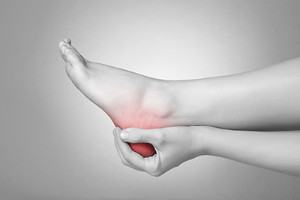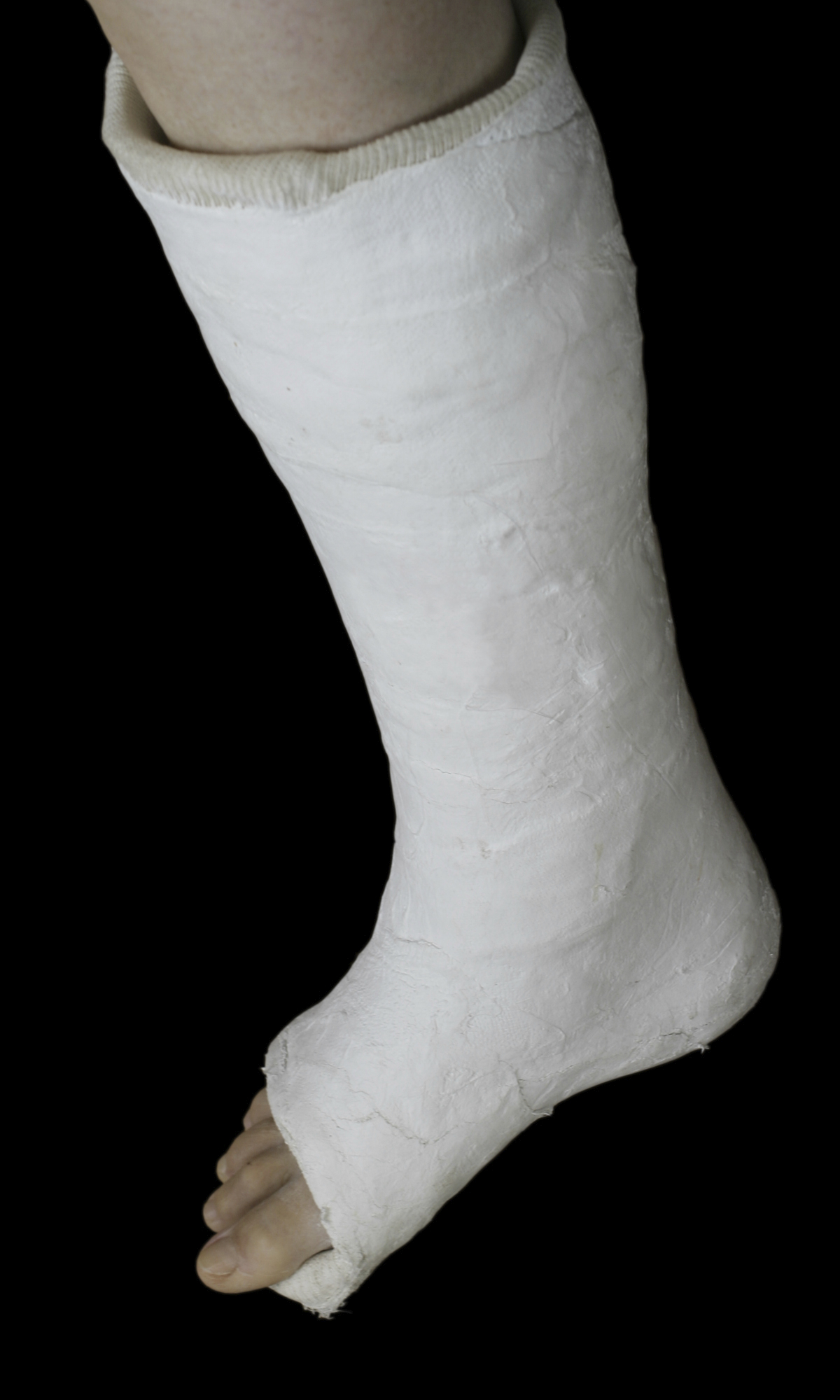Middlefield (860) 349-8500
Wallingford (203) 294-4977
Middlefield (860) 349-8500
Wallingford (203) 294-4977
 The medical condition plantar fasciitis, occurs when the band of tissue that is located on the bottom of the foot becomes inflamed. The function of this band of tissue is to connect the heel to the toes. Additionally, it helps the arch maintain its natural shape and prevents it from becoming completely flat. A common reason plantar fasciitis occurs includes over-stretching during running activities. Mild relief may be found when walking and standing is limited and when the foot can rest. Plantar fasciitis is a common ailment among baseball players, but it may be difficult for players to stop their activities, so the healing process can begin. If you have pain in the heel area of your foot, it is suggested that you schedule a consultation with a podiatrist to receive a proper diagnosis and advice.
The medical condition plantar fasciitis, occurs when the band of tissue that is located on the bottom of the foot becomes inflamed. The function of this band of tissue is to connect the heel to the toes. Additionally, it helps the arch maintain its natural shape and prevents it from becoming completely flat. A common reason plantar fasciitis occurs includes over-stretching during running activities. Mild relief may be found when walking and standing is limited and when the foot can rest. Plantar fasciitis is a common ailment among baseball players, but it may be difficult for players to stop their activities, so the healing process can begin. If you have pain in the heel area of your foot, it is suggested that you schedule a consultation with a podiatrist to receive a proper diagnosis and advice.
Plantar fasciitis is a common foot condition that is often caused by a strain injury. If you are experiencing heel pain or symptoms of plantar fasciitis, contact Dr. Gordon Fosdick from Affiliated Foot Care Center. Our doctor can provide the care you need to keep you pain-free and on your feet.
What Is Plantar Fasciitis?
Plantar fasciitis is one of the most common causes of heel pain. The plantar fascia is a ligament that connects your heel to the front of your foot. When this ligament becomes inflamed, plantar fasciitis is the result. If you have plantar fasciitis you will have a stabbing pain that usually occurs with your first steps in the morning. As the day progresses and you walk around more, this pain will start to disappear, but it will return after long periods of standing or sitting.
What Causes Plantar Fasciitis?
There are some risk factors that may make you more likely to develop plantar fasciitis compared to others. The condition most commonly affects adults between the ages of 40 and 60. It also tends to affect people who are obese because the extra pounds result in extra stress being placed on the plantar fascia.
Prevention
There are a variety of treatment options available for plantar fasciitis along with the pain that accompanies it. Additionally, physical therapy is a very important component in the treatment process. It is important that you meet with your podiatrist to determine which treatment option is best for you.
If you have any questions, please feel free to contact our offices located in Middlefield and Wallingford, CT . We offer the newest diagnostic and treatment technologies for all your foot care needs.
 If you have fallen, or if a heavy object dropped onto your foot, you may have broken your foot. Common symptoms of this condition often include immediate swelling and bruising. For severe fractures, the broken bone may pierce the skin, which can produce an open wound. Some patients hear a snapping sound as the break occurs and will most likely have pain while attempting to put weight on the foot. Partial relief may be found when the foot is elevated, as this may help to reduce a portion of the swelling. Ultimately, the healing process will begin when the foot is placed in a cast or boot, and this can typically take several weeks. If you have broken your foot, it is suggested that you consult with a podiatrist who can determine the best course of treatment for you.
If you have fallen, or if a heavy object dropped onto your foot, you may have broken your foot. Common symptoms of this condition often include immediate swelling and bruising. For severe fractures, the broken bone may pierce the skin, which can produce an open wound. Some patients hear a snapping sound as the break occurs and will most likely have pain while attempting to put weight on the foot. Partial relief may be found when the foot is elevated, as this may help to reduce a portion of the swelling. Ultimately, the healing process will begin when the foot is placed in a cast or boot, and this can typically take several weeks. If you have broken your foot, it is suggested that you consult with a podiatrist who can determine the best course of treatment for you.
A broken foot requires immediate medical attention and treatment. If you need your feet checked, contact Dr. Gordon Fosdick from Affiliated Foot Care Center. Our doctor can provide the care you need to keep you pain-free and on your feet.
Broken Foot Causes, Symptoms, and Treatment
A broken foot is caused by one of the bones in the foot typically breaking when bended, crushed, or stretched beyond its natural capabilities. Usually the location of the fracture indicates how the break occurred, whether it was through an object, fall, or any other type of injury.
Common Symptoms of Broken Feet:
Those that suspect they have a broken foot shoot seek urgent medical attention where a medical professional could diagnose the severity.
Treatment for broken bones varies depending on the cause, severity and location. Some will require the use of splints, casts or crutches while others could even involve surgery to repair the broken bones. Personal care includes the use of ice and keeping the foot stabilized and elevated.
If you have any questions please feel free to contact our offices located in Middlefield and Wallingford, CT . We offer the newest diagnostic and treatment technologies for all your foot and ankle needs.
 Stretching the feet is necessary in preventing foot and ankle injuries. Proper stretching techniques can increase mobility in the ankles and spreading the toes may become easier. Some of these exercises include circling your foot with your toes flexed and switching directions. Movement coordination is strengthened by pointing and flexing the foot and repeating several times. The ankle can become stronger by standing on one foot and shifting the weight on the toes. Additionally, when calf raises are practiced, the Achilles tendon can remain flexible. If you would like additional techniques on stretching your feet, please consult with a podiatrist who can properly guide you.
Stretching the feet is necessary in preventing foot and ankle injuries. Proper stretching techniques can increase mobility in the ankles and spreading the toes may become easier. Some of these exercises include circling your foot with your toes flexed and switching directions. Movement coordination is strengthened by pointing and flexing the foot and repeating several times. The ankle can become stronger by standing on one foot and shifting the weight on the toes. Additionally, when calf raises are practiced, the Achilles tendon can remain flexible. If you would like additional techniques on stretching your feet, please consult with a podiatrist who can properly guide you.
Stretching the feet is a great way to prevent injuries. If you have any concerns with your feet consult with Dr. Gordon Fosdick from Affiliated Foot Care Center. Our doctor will assess your condition and provide you with quality foot and ankle treatment.
Stretching the Feet
Stretching the muscles in the foot is an important part in any physical activity. Feet that are tight can lead to less flexibility and make you more prone to injury. One of the most common forms of foot pain, plantar fasciitis, can be stretched out to help ease the pain. Stretching can not only ease pain from plantar fasciitis but also prevent it as well. However, it is important to see a podiatrist first if stretching is right for you. Podiatrists can also recommend other ways to stretch your feet. Once you know whether stretching is right for you, here are some excellent stretches you can do.
It is best to go easy when first stretching your foot and work your way up. If your foot starts hurting, stop exercising and ice and rest the foot. It is advised to then see a podiatrist for help.
If you have any questions, please feel free to contact our offices located in Middlefield and Wallingford, CT . We offer the newest diagnostic and treatment technologies for all your foot care needs.
 Morton’s neuroma is a condition that causes pain in the ball of the foot, typically in between the third and fourth toe. It occurs when tissue thickens around a nerve. Although there are usually no external symptoms, it may feel as though you are standing on a pebble. It could also cause a burning sensation and numbness in the toes. Morton’s neuroma tends to affect specific groups of people more than others. For example, if you often wear high heels, you could be at risk for developing Morton’s neuroma. Athletes who engage in high-impact activity and wear tight shoes could find themselves with this ailment, as well. Finally, people with prior foot complications, such as bunions or hammertoes, are known to get Morton’s neuroma more often than the average person. If you feel like you may have this condition, be sure to consult with a podiatrist.
Morton’s neuroma is a condition that causes pain in the ball of the foot, typically in between the third and fourth toe. It occurs when tissue thickens around a nerve. Although there are usually no external symptoms, it may feel as though you are standing on a pebble. It could also cause a burning sensation and numbness in the toes. Morton’s neuroma tends to affect specific groups of people more than others. For example, if you often wear high heels, you could be at risk for developing Morton’s neuroma. Athletes who engage in high-impact activity and wear tight shoes could find themselves with this ailment, as well. Finally, people with prior foot complications, such as bunions or hammertoes, are known to get Morton’s neuroma more often than the average person. If you feel like you may have this condition, be sure to consult with a podiatrist.
Morton’s neuroma is a very uncomfortable condition to live with. If you think you have Morton’s neuroma, contact Dr. Gordon Fosdick of Affiliated Foot Care Center. Our doctor will attend to all of your foot care needs and answer any of your related questions.
Morton’s Neuroma
Morton's neuroma is a painful foot condition that commonly affects the areas between the second and third or third and fourth toe, although other areas of the foot are also susceptible. Morton’s neuroma is caused by an inflamed nerve in the foot that is being squeezed and aggravated by surrounding bones.
What Increases the Chances of Having Morton’s Neuroma?
Morton’s neuroma is a very treatable condition. Orthotics and shoe inserts can often be used to alleviate the pain on the forefront of the feet. In more severe cases, corticosteroids can also be prescribed. In order to figure out the best treatment for your neuroma, it’s recommended to seek the care of a podiatrist who can diagnose your condition and provide different treatment options.
If you have any questions, please feel free to contact our offices located in Middlefield and Wallingford, CT . We offer the newest diagnostic and treatment technologies for all your foot care needs.